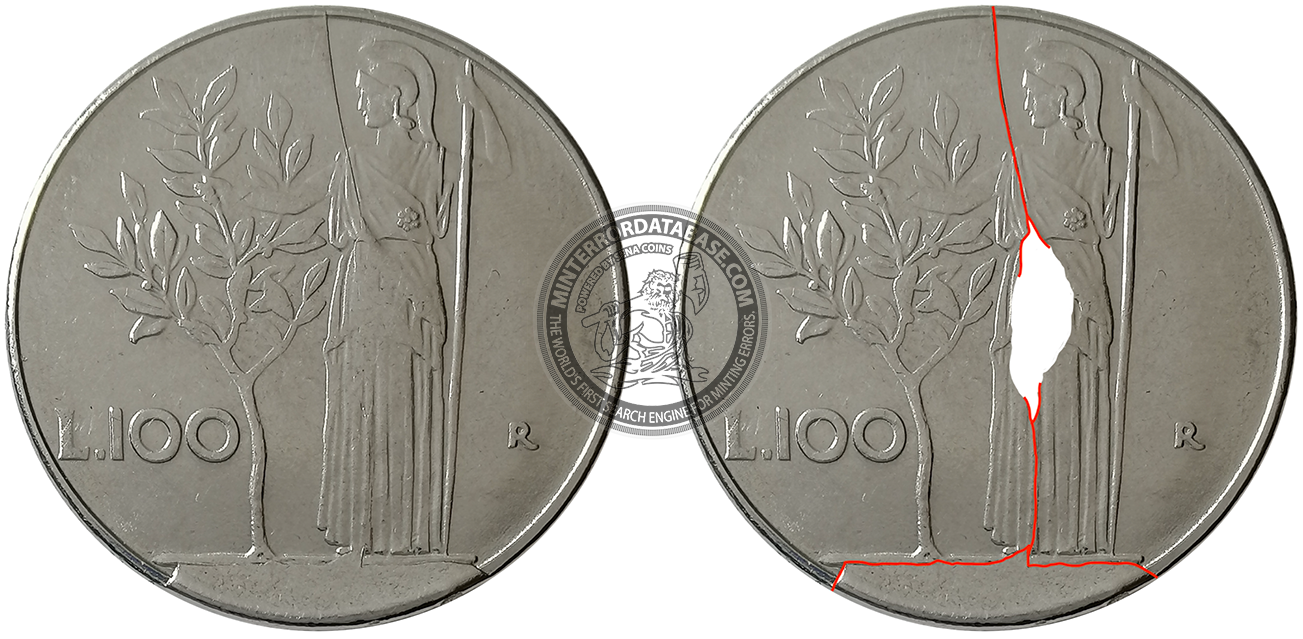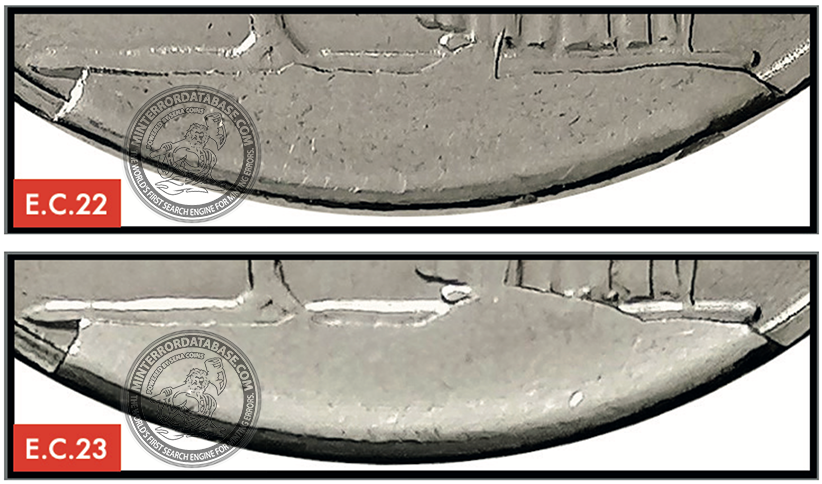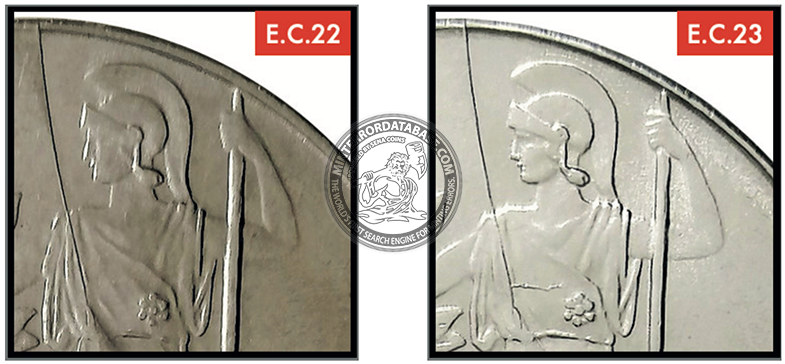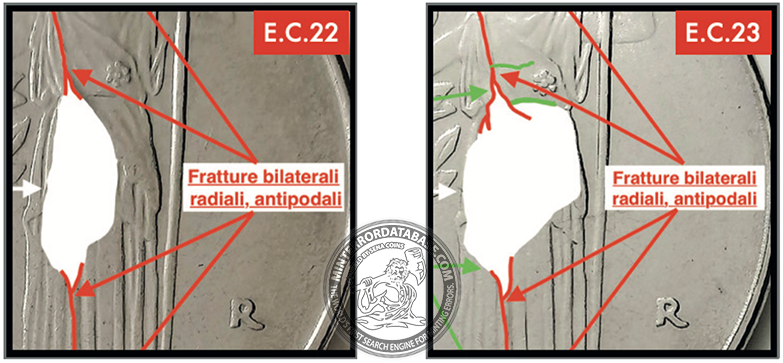Bilateral, radial and antipodal die crack
Two or more distinct cracks start from opposite poles of the edge along the design elements converging towards the center of the die without ever meeting.
Bilateral radial and antipodal die cracks create a central zone of subsidence. The central zone of subsidence consists of a slow and progressive sinking of the field in the central area of the die.
These types of cracks appear on the coin as two or more distinct raised metal lines that always start from the edge and converge towards the center of the coin without ever meeting, making the design elements unclear or non-existent within the subsidence zone. In very rare cases, it can be generated by a previous arcing rim to rim die break (E.C.22 and E.C.23).


Arcing rim to rim die break is generally rarer and more sought after than normal cracks, as collectors of minting errors (especially those specializing in minting breaks) love to reconstruct the various stages of formation. Taking the E.C.22 and E.C.23 coins as an example, we can see details that, when compared, lead to the coincidence of all visible cracks on the coin. Therefore, they have progressively been struck by the same broken die.

The arcing rim to rim die break of the lower die in the E.C.22 coin corresponds perfectly with that in the E.C.23 coin. The main difference that distinguishes the E.C.22 coin from the E.C.23 coin is found in the degree of breakage of the die.

E.C.22 coin: An oblique crack was created between the break and the crack of the lower vertical crack (left side) which consequently generated an additional die chip. This further crack runs through Minerva's left foot and extends obliquely to the vertical crack.
E.C.23 coin: unlike the E.C.22 coin, it has a further oblique and curved crack between the radial fracture and rim to rim die break. This crack has generated a further portion of broken die that starts from the radial die crack (right side), crosses the robe and the ground to rejoin the underlying rim to rim die break.
Given that these are repetitive errors, you can probably also find other coins in circulation minted by the same broken die with a degree that can be lower or higher than the coins from my collection. These specimens appear on the market very rarely and prices always reach high altitudes. Generally these coins are in high conservation, perhaps because they hardly go unnoticed and those who find them tend to hoard them or insert them carefully into their own collection.

E.C.22 coin: La frattura parte dal bordo, attraversa la spalla e il petto arrivando fino all’addome di Minerva.
E.C.23 coin: unlike the E.C.23 coin, it has a double horizontal branch of the radial die crack that proceeds irregularly above and below the rosette.


E.C.22 e E.C.23 coins: On the obverse, the edge at 13.00, the upper part of the letter "A" of REPVBBLICA and the tips of the bay leaves are devoid of features in both specimens. This is due to the high pressure of the upper die which, at the moment of minting, compresses the round against the broken lower die near the edge. The missing part of the coin (previously escaped from the beating chamber) does not generate friction and therefore almost completely cancels the embossed imprint in that specific area of the planchet on both sides.
Use the keyword Bilateral, radial and antipodal die crack in the global search engine to view all the coins with this type of error. Login or Sign up to insert new coins in the search engine and know the prices and rarity of all the coins in our database. The service is totally free.
© 2020-2022 Sena Coins - All rights reserved.